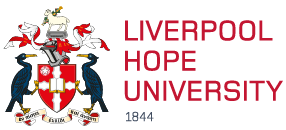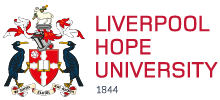Pioneering research by a Liverpool Hope University academic into one of the founders of modern Ireland has helped to inspire a new art show.
Dr Catherine Morris is a Senior Lecturer in Creative Writing at Hope.
Back in 2012, Dr Morris’ book Alice Milligan and the Irish Cultural Revival helped to write a new chapter in Ireland’s history.
Alice Milligan, born in County Tyrone in the north of Ireland and who died in 1953, was a prolific writer for more than six decades and also an influential political activist.
Yet before Dr Morris’ book, Milligan’s work was virtually unknown. The publication of Alice Milligan and the Irish Cultural Revival helped put Milligan back on the map as one of the founders of modern Ireland.

Writing in the The Irish Times, author and scholar Declan Kiberd described Dr Morris’ book as a ‘feat of astonishing research, at once an art of historical rehabilitation and of audacious interpretation’.
And the book didn’t go unnoticed among artists, either.
One of those was Dublin-based Sarah Pierce, who works with installation, performance, archives, talks and papers.
Pierce’s performance piece Gag was heavily influenced by Milligan and revolves around the historic outlawing of the Gaelic language - a subject close to Milligan’s heart. This work now forms part of a new group show at the Galway Arts Centre.

And Dr Morris says she’s delighted that her feminsit research has been able to highlight how a forgotten ‘cultural legacy’ can energise contemporary artist practice and hopes it might prove inspirational for students.
Dr Morris says she stumbled-upon Milligan’s work while researching the history of Thomas MacDonagh, revolutionary figure and writer who was executed for his part in the 1916 Easter Rising.
She reveals: “MacDonagh had written this journal, called the Irish Review, in which he said, ‘I’m going to begin by writing about the best - and the best is Alice Milligan’.
“And the reason why he said she was the best was because she was operating in all of these complicated, difficult places. She was a woman, she came from the North, she came from a Protestant Unionist background, and yet she had become a major figure in the Irish and language movement and in the cultural movement.
“I thought it was just my complete ignorance that I’d never heard of her. But when I went to the National Library of Ireland expecting to find a showcase of her works, there was nothing.
“She’d been written out of history after the Partition of Ireland in 1922 - because who is going to celebrate a radical internationalist Republican feminist in the North where Irish was again outlawed? Or in the newly founded patriarchal Irish Free State of the South where even now the Constitution still states ‘women belong in the home’.”
Milligan wrote extensively in newspapers - with that being the most immediate and affordable way to reach audiences with play scripts. She set up journals that had global reach and created spaces for those from all sorts of political and religious backgrounds.
And at the heart of everything was Milligan’s commitment to reanimate an inclusive Irish culture.
Another important facet of Milligan’s life was her work with Maud Gonne, an Irish republican revolutionary, to create a form of Irish theatre called ‘Tableaux’.
Dr Morris, whose teaching at Hope draws extensively on her use of archive as inspiration for making and writing new work, explains: “Tableaux is a way of telling a story where performers hold certain poses on stage while an off-stage orator reveals the narrative.
“The silence of the performers is really important, because it reveals something about British censorship, and also the censorship of women.
“And this was a time when the English were bringing in lots of theatre conventions from England and so the establishment of an Irish National theatre was a major part of the anti-colonial movement.
“Milligan wasn’t just a protector of Irish culture, she was an enabler.”
And what was Milligan like as a person?
Dr Morris says: “She came from a family that really honoured Irish culture, but from a Protestant Unionist perspective. Her sisters were incredible Irish musicians, and her family was also part of an archeological group, which gave her access to this great library.
“She founded women’s organisations, she set up presses, and she was very, very active socially - she knew everybody who featured in the Irish cultural movement, including W.B. Yeats and James Connolly before his execution.
“And she was also very defensive of her friends, which I think is key to her personality. She also continued to campaign and to write well into her 80s. That speaks to a remarkable figure.”
.jpg)
Morris also wrote a graphic novel of Milligan’s inspiring story that was published by Nerve Centre in Derry and launched on Key Stage Three National Curriculum across the whole of Northern Ireland in 2016. She then gifted her entire research archive to Omagh Public Library as a homage to the Peace Process.
The artist Sarah Pierce, meanwhile, draws parallels between Milligan and the Russian designer and architect El Lissitsky.

(Dr Catherine Morris, left, in discussion with artist Sarah Pierce, right)
She describes: “I was mainly interested in how Milligan’s use of language was a way to narrate her tableaus, calling forth a community to participate that was literate in the mythologies, and how this became a politically-charged moment in the Irish countryside.
“Lissitzky also used theatre and language, namely ‘Zoom’, the made up speech that actors learned and could perform, and so the transposing of Zoom and Irish in the project became kind of a joke - or gag - filtered through the ‘insider’ understanding of what is being said.
“Gag includes a performance in Irish, as well as a stage or set made from debris, and this often surprises people. The work takes on the institutional texture of the spaces where it is ‘reinstituted’ as art. It is never the same, and never looks or feels the same to produce.”
And Pierce says Dr Morris’ research was ‘deeply influential’ when it came to the making of the show.
She adds: “In particular, the use of the tableaux as something that appears, and is convincing, and yet we understand is only a stand-in, a ruse, or game, a sight gag.
“The work is on display during the time of an exhibition and then completely disappears again, shifting back into debris which is discarded at the end of the show.”
You can watch a special conversation between Dr Morris and Sarah Pierce via this YouTube link.



